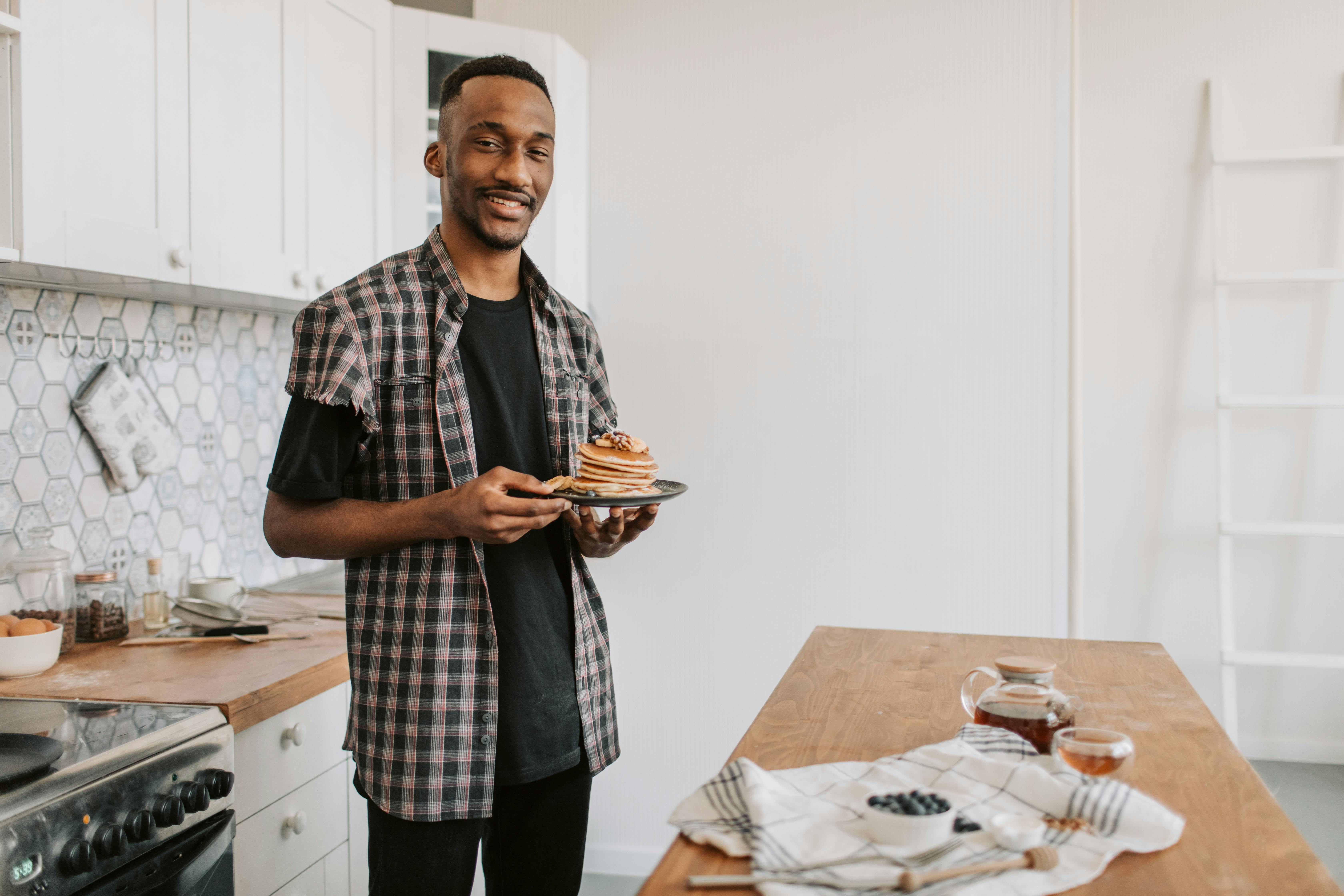
Personalization increases aesthetic appeal and real estate investment for homeowners
From high-value homes in the San Francisco Bay Area to sprawling mountain homes in the Colorado Rockies, discerning homeowners demand custom designs and finishes in their kitchens. In particular, they seek to express their individuality and distinct design preferences with the fast-growing preferred design material – concrete.
In fact, concrete countertops have become a kind of
status symbol for kitchens, rivaling granite and other
End countertop surface options. Consumer Reports Magazine
(August 2004) ranked highest in concrete for “customization” and “exclusivity” among high-end kitchen countertops.
As a custom product, the amount of time and labor required to produce concrete countertops places them as the labor-leading and most expensive countertop materials.
However, concrete countertops are becoming more accessible for those on a modest budget. The latest do-it-yourself (DIY) trend to captivate homeowners and builders is building your own concrete countertop. This phenomenon has gained popularity in large part due to Cheng’s best-selling book, Concrete Countertops: Design, Shapes, and Finishes for the New Kitchen and Bathroom (Taunton Press, 2002). According to Cheng, there is little monetary investment in making concrete countertops, but the creative benefits of working with concrete are plentiful.
THE SHOWSTOPPER
Increasingly, homeowners are moving away from the drab, manufactured look of traditional countertop surfaces and choosing concrete for its earthy and timeless appeal. Additionally, the options for customizing concrete countertops are endless: concrete can be stained, polished, stamped and stained or personal items such as stones, seashells and fossils embedded in the countertop surface, adding feeling and character. Functional features such as drainboards, soap dishes and trivets can also be incorporated to suit the needs and lifestyle of homeowners.
Concrete is slowly being demystified as characteristically cold and industrial. On the contrary, this ancient material is warm and surprisingly tactile; people can’t help but touch its smooth, polished surfaces. Real estate agent Joy Rasmussen, who recently sold her mountain home, a short-term investment property in Steamboat Springs, CO, recounts her visitors’ experiences with concrete: “When I had open houses, visitors gravitated toward the concrete countertops – – a lot of people around here have never seen them. “
2265 sq. Ft. Joy. foot The mountain home was custom built by her husband, Ken Otterman, along with KJ Otterman, president of Classic Special Custom Homes. They built pour-in-place concrete countertops for the home’s kitchen and three bathrooms using concrete countertops as a guide. Sand-colored concrete countertops were polished smooth and then combined with natural slate of different colors, such as charcoal, rust, and gold tones, that form kitchen and bathroom backsplashes. As a design accent, small rectangular slate tiles were added to
the edge of the bathroom sinks, which added a unique touch to the custom vanities.
When Joy and Ken decided to sell their home, their investment in concrete countertops proved its worth. “We were able to put the house over $ 20,000 above market value and had no trouble selling it,” says Joy, as she talks about the long list of improvements throughout her home, including solid knotty pine doors, natural slate wall accents. and wooden floors. “The concrete countertops were easily the most unique and impressive of all the finishes. I think they were an important part in
adding value to the home. All you see in houses around here is granite countertops, and I really think home buyers are getting pretty numb from the granite. “
“Concrete countertops are a unique offering for home buyers who see the same finishes used in house after house they visit,” explains Joy, offering her insight as a seasoned realtor. “Having concrete countertops almost gives you bragging rights, you have something different from your neighbors.”
BREAKING THE MOLD
Another advantage of concrete is its adaptability in modern or traditional environments, especially when combined with other materials such as varied metals, wood or stone. “The concrete adds so many [possibilities] to stone, and the combination with slate, which is very popular here, gives mountain houses an overall warm and natural touch, “says Joy.
Since then, Joy and Ken have built a much larger house (4,000 square feet) that offers expansive views of Steamboat Ski Resort and is intended to serve as a long-term investment for the couple. They’ve also expanded their list of custom finishes, including hand-smoothed walls, sleek oil-polished bronze hardware, knotted pine doors that arch across the top, cabinets in a natural knotty alder, and their favorite: kitchen countertops. of concrete.
Unlike their previous home, KJ and his specialized team poured charcoal-colored countertops using the precast method in the unfinished basement of the new home. Before pouring the concrete, they sprinkled a series of semi-precious stones into the mold, such as leopard skin, moonstone, mother-of-pearl and turquoise. After the surface was buffed and lightly polished, the end result was an impressive color combination. “By far the mother of pearl was the most incredible,” says Joy.
The L-shaped concrete countertop has a rustic, rustic stone look, complementing its rugged country setting. An integral drain board and trivet provide added function and interest to the concrete countertop. Natural slate backsplashes, various wall accents, and a butcher block countertop on the kitchen island resonate with the traditional warmth and earthiness of concrete countertops.
Joy and Ken’s respective backgrounds in real estate and custom home building, and as investment home buyers, have helped them realize that concrete countertops can add tremendous aesthetic and financial value to a home. The customization of the concrete and the “spectacular” appeal is like no other countertop surface. Cheng is an advocate of emotional aesthetics and home building that capture these emotions, as in the case of Joy and Ken Otterman. Cheng concludes: “People really want differentiation, something personal, something personalized, and the concrete can do that for them.”
For more information on concrete countertops, visit: http://www.ConcreteExchange.com/